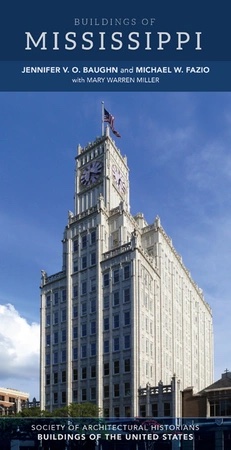
Tunica became the county seat in 1889, and after the first courthouse burned in 1920, Gates designed this three-story classical building. A projecting central entrance bay creates a tripartite facade, with an E. Howard and Company clock and a red tile mansard roof. Ionic pilasters, modillions, egg-and-dart molding, triglyphs, and roundels stand out against the subtle texture of the variegated brown Flemish bond brick walls. First-floor offices surround a grand central lobby, while the courtroom takes up most of the second and third floors. A rear addition (1964) houses the chancery clerk’s office. Behind the courthouse stands the vacant red brick two-story jail (1894), distinguished by a Romanesque Revival corner tower, round-arched entrance, and corbeled cornice.

